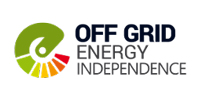
In this first part of a series of articles from IDTechEx, an overview of the flow batteries characteristics is provided, extrapolated from IDTechEx’s recent report “Redox Flow Battery 2020-2030: Forecast, Challenges, Opportunities”.
While Li-ion batteries are dominating the stationary energy storage sector, a growing number of companies are developing different technologies to be competitive in the near future and bring to the market a more competitive energy storage system. Among the Li-ion batteries competitors, the Redox Flow Battery (RFB) is one of the main competitors currently approaching the market.
Recently IDTechEx performed an in-depth analysis of redox flow batteries from a technical and market aspect, evaluating their potential to address the evolving stationary energy storage market.
While it is clear that Li-ion batteries will dominate the scene for the near future, this promising competitor has already shown its capability to gain its portion of the energy storage market, pushing the ES industry toward new horizons.
The extensive volumetric (Wh/L) and gravimetric (Wh/kg) energy density of Li-ion batteries make this technology well suited to address the EV market. Pushed by the cost decreasing from the EV market, this technology started to also be competitive in the stationary energy storage market, for front-of-meter (FTM), and behind-the-meter (BTM) applications. The capability to address the complete spectrum of the energy storage market is translated in a power range of few kWs for behind-the-meter use, to MWs power output for front-of-meter applications.
These properties make Li-ion batteries extremely competitive and difficult to be challenged, although other technologies are starting to appear in the market.





